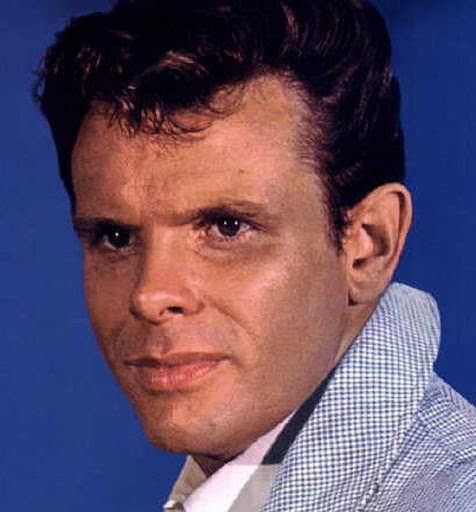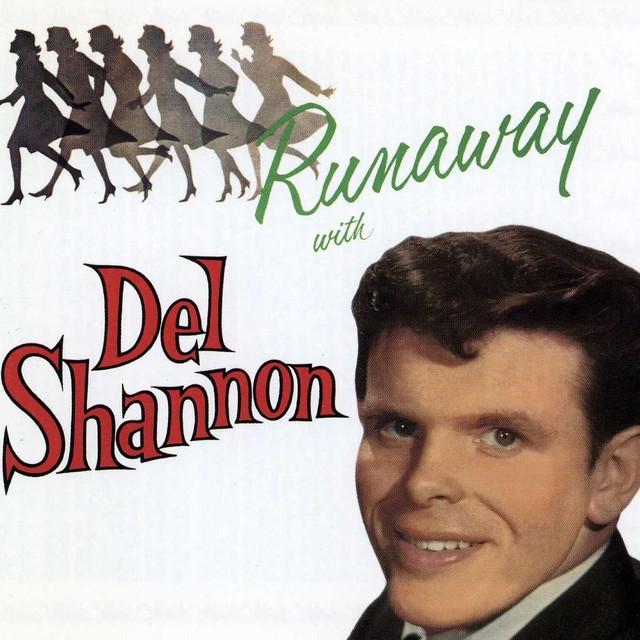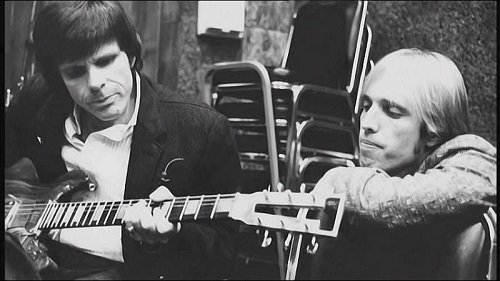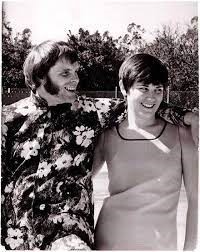 As the 50s became the 60s, many thought rock & roll was on the way out. Buddy Holly was dead. Little Richard had quit rocking to join the ministry. Elvis was in the army (and would never be quite the same after he came out). Chuck Berry was on his way to jail.
As the 50s became the 60s, many thought rock & roll was on the way out. Buddy Holly was dead. Little Richard had quit rocking to join the ministry. Elvis was in the army (and would never be quite the same after he came out). Chuck Berry was on his way to jail.
Even scarier, folk music was threatening to become young America’s favorite genre.
But there was one man who kept the flame of rock & roll burning until the Beatles brought the British Invasion to our shores. That man was Charles Weedon Westover. Perhaps you know him better by his stage name – Del Shannon!
Shannon was born in 1934 and raised in Michigan. He spent his childhood listening to country artists (as rock & roll hadn’t been invented yet) and his voice never lost that country twang. Following a stint in the army, Shannon began playing part-time in a Battle Creek, Michigan band called the Moonlight Ramblers. By 1958, the Ramblers ditched their lead singer, who seemed to have a bit of a drinking problem, and promoted Del to group leader.
 By 1960, Del and his keyboard player, Max Cook, signed as songwriters and recording artists with Big Top Records. Their first couple of tunes went nowhere. Then, local DJ Ollie McLaughlin suggested they take an older song from their repertoire, rework it a bit, and add the strange organ hybrid Cook had invented and was using in their live show (named the Musitron). Of course, the song was “Runaway,” and it lived up to its title becoming a runway smash that went to #1 not just in the United States, but all over the world.
By 1960, Del and his keyboard player, Max Cook, signed as songwriters and recording artists with Big Top Records. Their first couple of tunes went nowhere. Then, local DJ Ollie McLaughlin suggested they take an older song from their repertoire, rework it a bit, and add the strange organ hybrid Cook had invented and was using in their live show (named the Musitron). Of course, the song was “Runaway,” and it lived up to its title becoming a runway smash that went to #1 not just in the United States, but all over the world.
Shannon managed to follow up that success with a string of other hard rockers that also found chart success, including “Hats Off to Larry” (#5), “Little Town Flirt” (#12), “Handy Man” (#22), “Keep Searchin’” (#9), and “Stranger in Town” (#30).
On a tour of England in 1963, Shannon played on a bill with the Beatles and liked what he heard. When he returned to the States, he recorded his own version of “From Me to You.” While it only managed to make it to #77, it was the very first Lennon-McCartney tune to chart in America.
Once the Beatles started putting their own records on the U.S. charts, times got hard for a lot of American recording acts and Shannon was no different. By late 1965, the hits stopped coming.
 As the hits slowed down, Shannon’s drinking increased, which certainly didn’t help his career. He found sobriety by 1978 and began putting his career back together. In 1982, Shannon recorded a cover of “Sea of Love,” a tune composer Phil Phillps took to #1 in 1959. That song, part of an album produced by Tom Petty, actually gave Shannon his first top 40 hit (reaching #33) in 16 years.
As the hits slowed down, Shannon’s drinking increased, which certainly didn’t help his career. He found sobriety by 1978 and began putting his career back together. In 1982, Shannon recorded a cover of “Sea of Love,” a tune composer Phil Phillps took to #1 in 1959. That song, part of an album produced by Tom Petty, actually gave Shannon his first top 40 hit (reaching #33) in 16 years.
In 1986, his career got another shot in the arm when NBC launched Crime Story and used a new recording of Shannon and his signature tune, “Runaway,” as its theme song.
 By 1990, Shannon was hard at work on a new album. He put himself under a lot of stress to finish the project. That led him to a doctor who prescribed the antidepressant, Prozac. Big mistake. According to Shannon’s wife, Shirley Westover, Shannon’s personality underwent a dramatic shift as soon as he started taking the medication, developing severe insomnia, extreme fatigue, and other disturbing symptoms. Just 15 days after he began taking Prozac, Shannon took his own life with no note and no goodbye. His wife swears that suicide was totally out of character for her husband.
By 1990, Shannon was hard at work on a new album. He put himself under a lot of stress to finish the project. That led him to a doctor who prescribed the antidepressant, Prozac. Big mistake. According to Shannon’s wife, Shirley Westover, Shannon’s personality underwent a dramatic shift as soon as he started taking the medication, developing severe insomnia, extreme fatigue, and other disturbing symptoms. Just 15 days after he began taking Prozac, Shannon took his own life with no note and no goodbye. His wife swears that suicide was totally out of character for her husband.
Having worked with both Tom Petty and Jeff Lynne, there were rumors that he might replace Roy Orbison in The Travelling Wilburys. Those rumors died along with Del.
Del Shannon was posthumously elected to the Rock and Roll Hall of Fame in 1999. His music is still frequently featured in movies and TV shows. Any true rock fan owes a huge debt to the guy who kept rock alive in the early 60s.